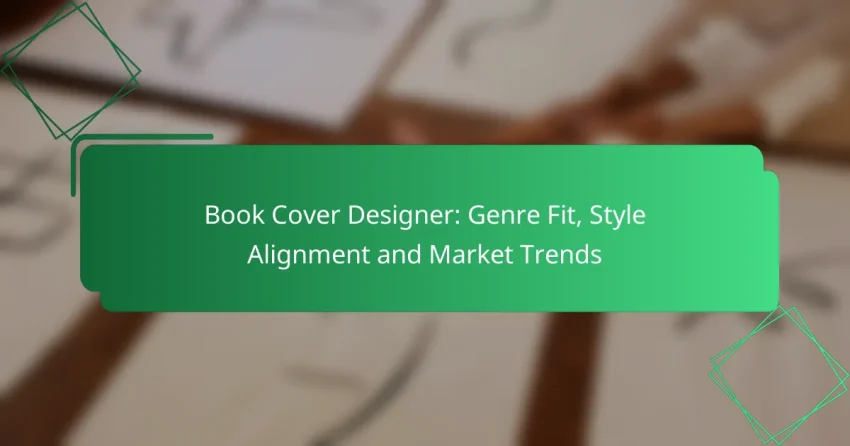Choosing the right book cover designer is crucial for effectively reaching your target audience, as it requires a deep understanding of genre-specific visual languages. A designer well-versed in genre conventions and current market trends can create covers that not only attract readers but also enhance the book’s overall marketability. By analyzing popular design elements and styles, authors can ensure their covers resonate with readers and stand out in a competitive landscape.
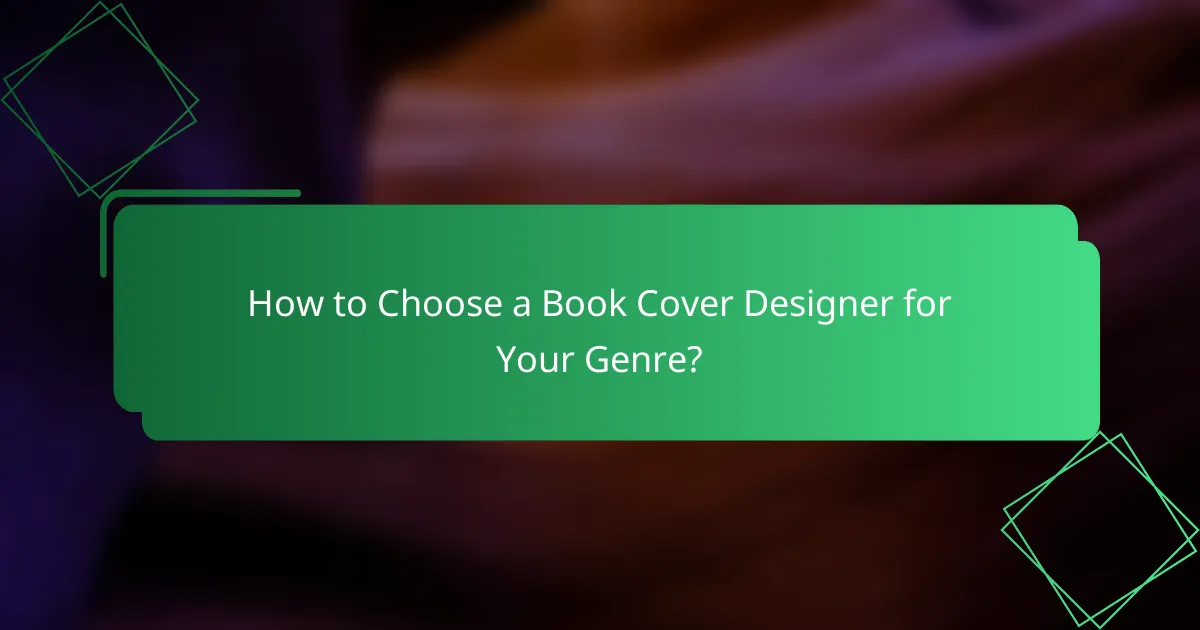
How to Choose a Book Cover Designer for Your Genre?
Selecting a book cover designer tailored to your genre involves understanding the specific visual language that resonates with your target audience. A designer’s familiarity with genre conventions and market trends can significantly enhance your book’s appeal and marketability.
Understanding genre-specific design
Each literary genre has distinct visual elements that attract its audience. For instance, romance covers often feature soft colors and intimate imagery, while thrillers may use darker tones and bold typography to convey suspense. Familiarizing yourself with these genre-specific aesthetics can help you communicate your vision effectively to potential designers.
Consider creating a mood board with examples of covers you admire within your genre. This will not only clarify your preferences but also serve as a reference point when discussing ideas with designers.
Evaluating designer portfolios
Reviewing a designer’s portfolio is crucial in assessing their ability to create genre-appropriate covers. Look for a diverse range of styles that align with your book’s theme and target audience. Pay attention to their use of color, typography, and imagery, as these elements should resonate with the genre’s conventions.
It’s beneficial to note how well the designer’s previous work has performed in the market. If possible, find out which covers have led to successful book sales or positive reader feedback.
Assessing client reviews
Client reviews provide insight into a designer’s reliability and professionalism. Look for feedback on their communication skills, adherence to deadlines, and ability to incorporate client feedback. Positive reviews often indicate a designer who is not only talented but also easy to work with.
Platforms like Goodreads or design-specific forums can be valuable resources for finding honest reviews. Consider reaching out to authors who have worked with the designer to gain a deeper understanding of their experience.
Identifying design trends in your genre
Staying updated on current design trends within your genre can give your book a competitive edge. Trends may shift based on reader preferences, cultural influences, or emerging design techniques. For example, minimalist designs have gained popularity across various genres, emphasizing simplicity and clarity.
Follow industry blogs, social media accounts, and design showcases to keep abreast of what’s trending. Participating in author and designer communities can also provide insights into effective design strategies that resonate with readers today.
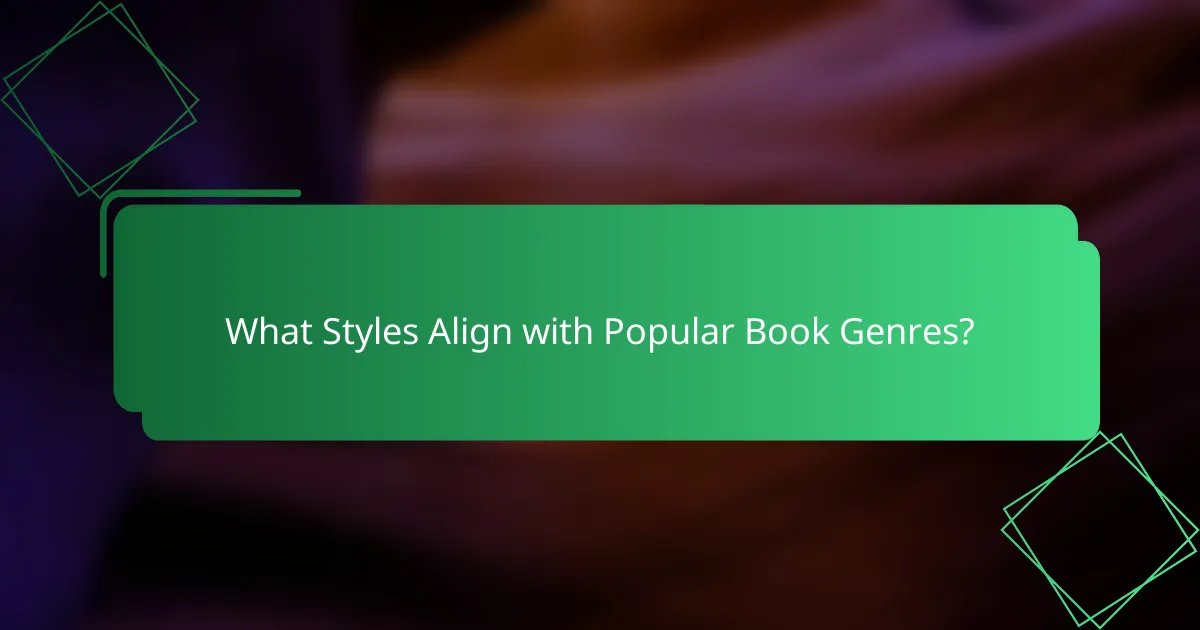
What Styles Align with Popular Book Genres?
Different book genres require distinct design styles to effectively attract their target audiences. Understanding these styles helps designers create covers that resonate with readers and align with market trends.
Romance cover design elements
Romance covers often feature soft colors, elegant typography, and imagery that evokes emotion. Common elements include couples in intimate poses, floral patterns, and warm tones that suggest passion and connection.
Designers should consider using fonts that convey romance, such as script or serif styles, while ensuring readability. Popular trends include minimalist designs that focus on a single, striking image paired with a compelling title.
Thriller genre visual cues
Thriller covers typically utilize dark colors, bold typography, and suspenseful imagery to create a sense of urgency and intrigue. Visual cues often include shadows, urban landscapes, or objects that hint at danger, such as weapons or mysterious figures.
Designers should aim for a high-contrast look to grab attention quickly. Using a limited color palette can enhance the mood, while sharp, sans-serif fonts can convey a modern, edgy feel that aligns with the genre’s intensity.
Fantasy art styles
Fantasy covers are characterized by vibrant colors, intricate illustrations, and fantastical elements that transport readers to other worlds. Common motifs include mythical creatures, enchanted landscapes, and elaborate costumes that reflect the story’s setting.
Designers should consider using digital painting techniques or traditional art styles that resonate with the fantasy genre. Incorporating elements like maps or symbols can also enhance the cover’s appeal, inviting readers to explore the narrative’s depth.

How to Analyze Market Trends for Book Covers?
To analyze market trends for book covers, focus on identifying popular design elements, color schemes, and styles that resonate with target audiences. Understanding these trends helps ensure that your book cover aligns with reader expectations and stands out in a competitive market.
Current trends in book cover design
Current trends in book cover design often reflect broader cultural movements and reader preferences. Minimalism, bold typography, and vibrant colors are popular, with many covers opting for simple yet striking visuals that convey the essence of the story. Additionally, genre-specific trends, such as dark and moody aesthetics in thrillers or whimsical illustrations in children’s books, play a crucial role in attracting the right audience.
Another trend is the use of textured finishes and unique materials, which add a tactile element to the book. This can enhance the overall appeal and make the book more memorable on shelves or online listings.
Impact of social media on design choices
Social media significantly influences design choices for book covers, as platforms like Instagram and Pinterest serve as visual inspiration hubs. Designers often analyze trending hashtags and popular posts to gauge what styles are resonating with readers. Covers that are visually striking tend to perform better on these platforms, leading to increased visibility and sales.
Moreover, social media allows for direct feedback from potential readers, enabling designers to adjust their concepts based on audience preferences. Engaging with readers through polls or comments can provide valuable insights into what elements attract attention.
Using market research tools
Utilizing market research tools can provide critical data on book cover trends and consumer preferences. Websites like Goodreads and Amazon allow you to analyze best-selling books in various genres, revealing common design elements and themes. Additionally, tools such as Google Trends can help identify rising keywords and topics that may influence cover design.
Consider conducting surveys or focus groups to gather direct feedback from your target audience. This qualitative data can be invaluable in shaping a cover that resonates with readers and aligns with current market trends.
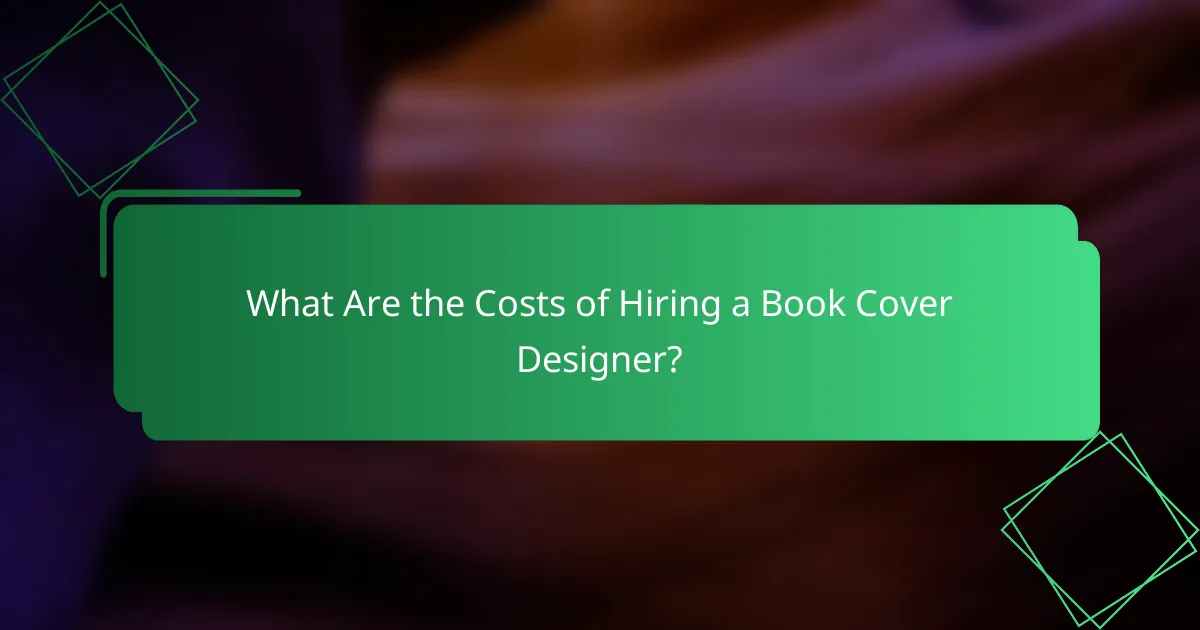
What Are the Costs of Hiring a Book Cover Designer?
The costs of hiring a book cover designer can vary widely based on experience, complexity, and the designer’s location. Generally, authors can expect to pay anywhere from a few hundred to several thousand dollars for a professional cover design.
Average pricing for freelance designers
Freelance book cover designers typically charge between $200 and $2,500, depending on their expertise and the project’s requirements. Entry-level designers may offer lower rates, while established professionals with a strong portfolio often command higher fees.
For example, a basic cover design from a newer designer might cost around $200-$500, while a custom design from a seasoned expert could range from $1,000 to $2,500 or more. It’s essential to evaluate the designer’s previous work to ensure it aligns with your vision.
Factors influencing design costs
Several factors can influence the cost of book cover design, including the designer’s experience, the complexity of the design, and the specific genre of the book. Designers with a proven track record in a particular genre may charge more due to their specialized knowledge.
Additionally, the time required for revisions and the inclusion of custom illustrations or photography can significantly impact the final price. Authors should communicate their needs clearly to avoid unexpected costs.
Budgeting for design in self-publishing
When self-publishing, budgeting for book cover design is crucial. Authors should allocate a portion of their overall budget to cover design, ideally between 10% to 20% of their total publishing expenses. This investment can significantly affect a book’s marketability and sales potential.
It’s wise to research multiple designers and request quotes to find a balance between quality and affordability. Setting a clear budget and sticking to it can help prevent overspending while still achieving a professional result.

How to Collaborate Effectively with Your Designer?
Effective collaboration with your designer involves clear communication and mutual understanding of goals. Establishing a strong working relationship can lead to a book cover that resonates with your target audience.
Setting clear expectations
Clearly defining your expectations from the outset is crucial for a successful collaboration. Outline your vision for the book cover, including themes, colors, and any specific elements you want to include. This helps the designer understand your preferences and reduces the likelihood of misunderstandings.
Consider creating a brief that includes examples of styles you like, along with details about your target audience and genre. This can serve as a reference point throughout the design process.
Providing constructive feedback
When reviewing design drafts, focus on providing constructive feedback that is specific and actionable. Instead of saying “I don’t like this,” explain what aspects don’t resonate with you and why. This approach helps the designer make informed adjustments.
Use a feedback framework, such as “What I like,” “What I would change,” and “What I would add,” to structure your comments. This can streamline communication and ensure that all points are addressed effectively.
Understanding the design process
Familiarizing yourself with the design process can enhance your collaboration with the designer. Typically, the process includes initial concepts, revisions based on feedback, and finalization of the design. Knowing these stages allows you to manage your expectations and timelines.
Be open to the designer’s expertise and suggestions, as they may offer insights that align with current market trends or genre-specific styles. Understanding that design is iterative can help you appreciate the evolution of your book cover.
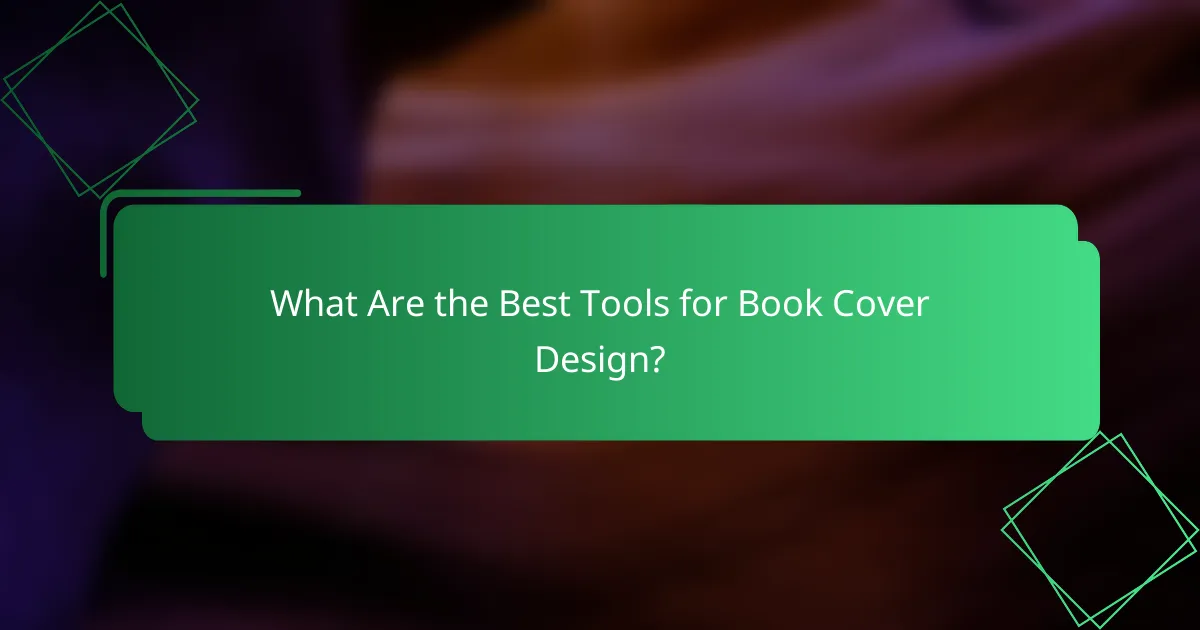
What Are the Best Tools for Book Cover Design?
The best tools for book cover design include user-friendly options like Canva and professional-grade software such as Adobe InDesign. Choosing the right tool depends on your design skills, budget, and the complexity of your project.
Canva for DIY designs
Canva is an excellent choice for those looking to create book covers without extensive design experience. It offers a wide range of templates tailored to various genres, allowing users to customize colors, fonts, and images easily.
With its drag-and-drop interface, Canva enables quick design creation. Users can access a free version, but premium features are available through a subscription, typically costing around $12.99 per month. This makes it accessible for indie authors and small publishers.
Adobe InDesign for professionals
Adobe InDesign is the industry standard for professional book cover design, offering advanced features for layout and typography. It allows for precise control over design elements, making it ideal for complex projects that require high-quality output.
While InDesign has a steeper learning curve compared to Canva, it provides tools for creating print-ready files and supports various formats. The subscription fee is approximately $20.99 per month, which is a worthwhile investment for serious designers aiming for polished, professional results.
